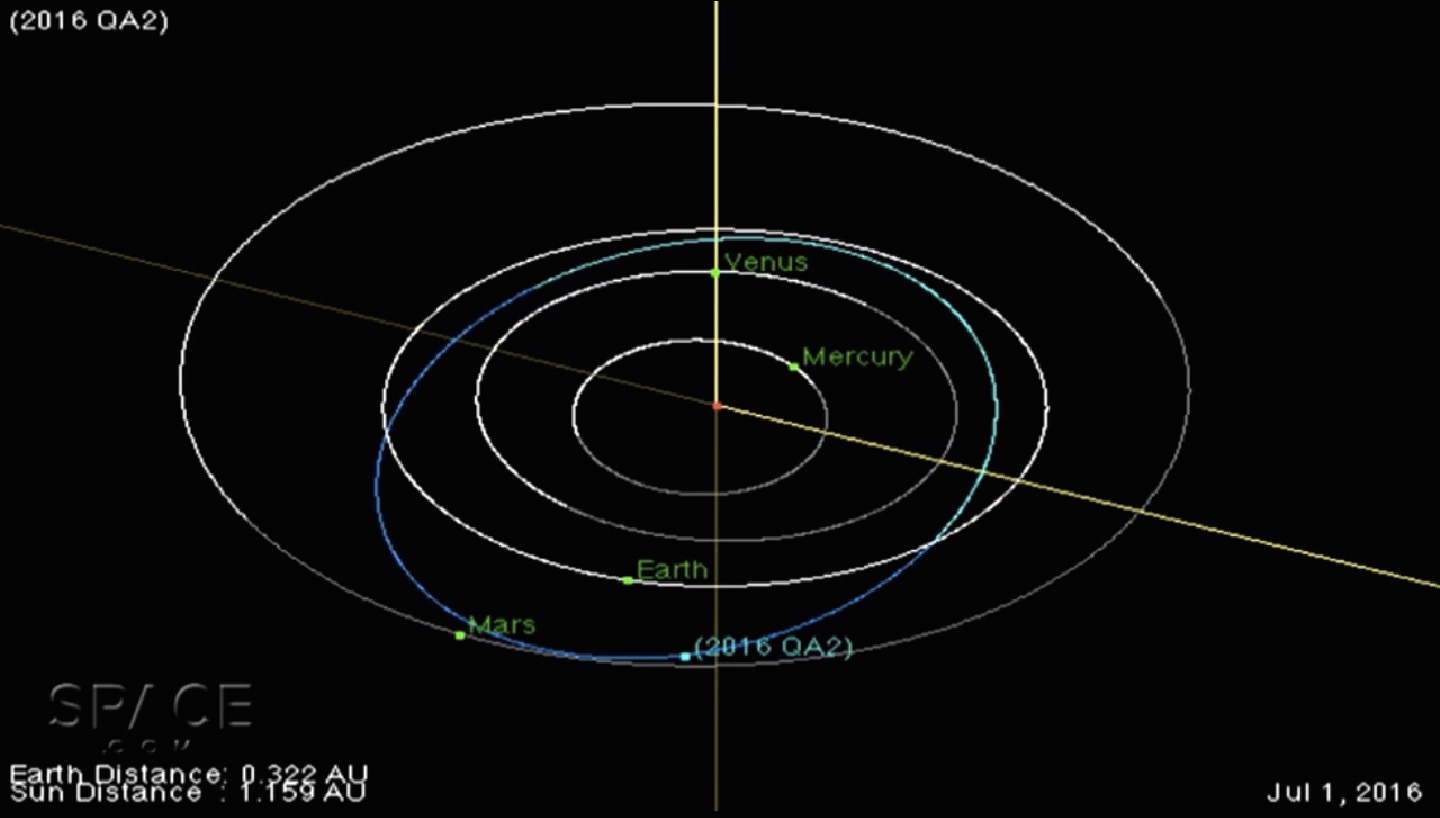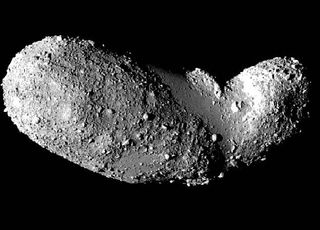
An asteroid gave Earth a close shave Sunday (Aug. 28), just a day after astronomers first spotted the object.
The newfound asteroid 2016 QA2 zoomed within 50,000 miles (80,000 kilometers) or so of the planet Sunday. For perspective, the moon orbits Earth at an average distance of 239,000 miles (384,600 km).
Astronomers think 2016 QA2 is between 80 and 180 feet (25 to 55 meters) wide. That means the space rock is slightly bigger than the object that exploded over the Russian city of Chelyabinsk in February 2013, injuring more than 1,200 people.
The Chelyabinsk asteroid was probably 65 feet (20 m) or so in diameter when it hit Earth's atmosphere, scientists have said. (The Chelyabinsk object exploded high above the ground, generating a powerful shock wave that shattered thousands of windows. The injuries — none of which were fatal — were cuts caused by flying glass.)
The SONEAR Observatory in Brazil discovered 2016 QA2 on Saturday (Aug. 27). The asteroid has a more elliptical orbit than Earth does, coming as close to the sun as 0.76 astronomical units (AU) and getting as far away as 1.18 AU, according to the Minor Planet Center. (One AU is the average distance form Earth to the sun: about 93 million miles, or 150 million km.)
The newfound asteroid completes one lap around the sun every 350 days, researchers said.

Asteroids in 2016 QA2's size range could conceivably do serious damage on a local scale if they hit Earth. In 1908, for example, an object thought to be about 130 feet (40 m) wide exploded over Siberia, flattening trees over an 825-square-mile area (2,137 square km). (It may seem like asteroids really have it in for Russia, but the nation's higher incidence of strikes is just a result of its huge size.)
Get the Space.com Newsletter
Breaking space news, the latest updates on rocket launches, skywatching events and more!
But an asteroid has to be really big — probably at least 0.6 miles (1 km) wide — to potentially wipe out human civilization or cause some other global catastrophe, astronomers have said. Scientists think they've spotted about 95 percent of the potentially hazardous, mountain-size space rocks out there, and none of those objects pose a threat for the foreseeable future.
Follow Mike Wall on Twitter @michaeldwall and Google+. Follow us @Spacedotcom, Facebook or Google+. Originally published on Space.com.
Join our Space Forums to keep talking space on the latest missions, night sky and more! And if you have a news tip, correction or comment, let us know at: community@space.com.

Michael Wall is a Senior Space Writer with Space.com and joined the team in 2010. He primarily covers exoplanets, spaceflight and military space, but has been known to dabble in the space art beat. His book about the search for alien life, "Out There," was published on Nov. 13, 2018. Before becoming a science writer, Michael worked as a herpetologist and wildlife biologist. He has a Ph.D. in evolutionary biology from the University of Sydney, Australia, a bachelor's degree from the University of Arizona, and a graduate certificate in science writing from the University of California, Santa Cruz. To find out what his latest project is, you can follow Michael on Twitter.











